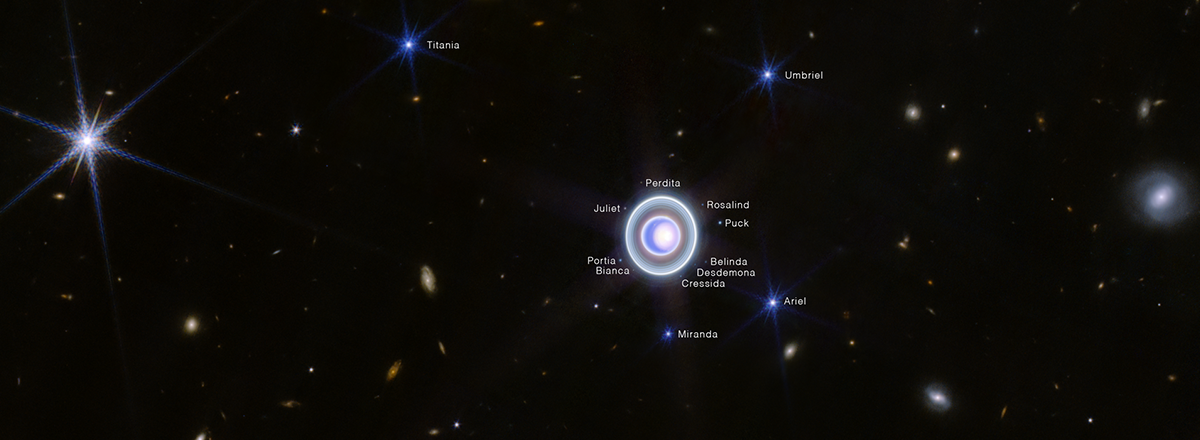James Webb Space Telescope Captures a Stunning Image of Uranus and Its Rings
NASA's James Webb Space Telescope has provided a captivating view of the enigmatic ice giant Uranus, revealing its intricate system of rings, moons, storms, and atmospheric features, including a seasonal polar cap.

NASA's James Webb Space Telescope has provided a captivating view of the enigmatic ice giant Uranus, revealing its intricate system of rings, moons, storms, and atmospheric features, including a seasonal polar cap. This recent image, which builds upon a two-color version released earlier this year, offers a more detailed and comprehensive look at the distant planet.
The Webb telescope's exceptional sensitivity allowed it to capture both the faint inner and outer rings of Uranus, including the elusive Zeta ring, the dimmest and most diffuse of the planet's rings. The telescope also observed numerous of Uranus's 27 known moons, some of which were even spotted within the ring system.
In visible wavelengths, as observed by the Voyager 2 spacecraft in the 1980s, Uranus appeared as a calm, solid blue sphere. However, in infrared wavelengths, the Webb telescope is unveiling a dynamic and enigmatic ice world with a multitude of intriguing atmospheric features.
One of the most notable features is Uranus's seasonal north polar cloud cap. In comparison to the previous Webb image from earlier this year, the newer images provide enhanced visibility of certain details within the cap, such as the bright, white inner cap and the dark lane at the bottom of the polar cap.
Additionally, several bright storms can be observed near and below the southern border of the polar cap. The appearance and frequency of these storms within Uranus's atmosphere may be influenced by a combination of seasonal and meteorological factors.

